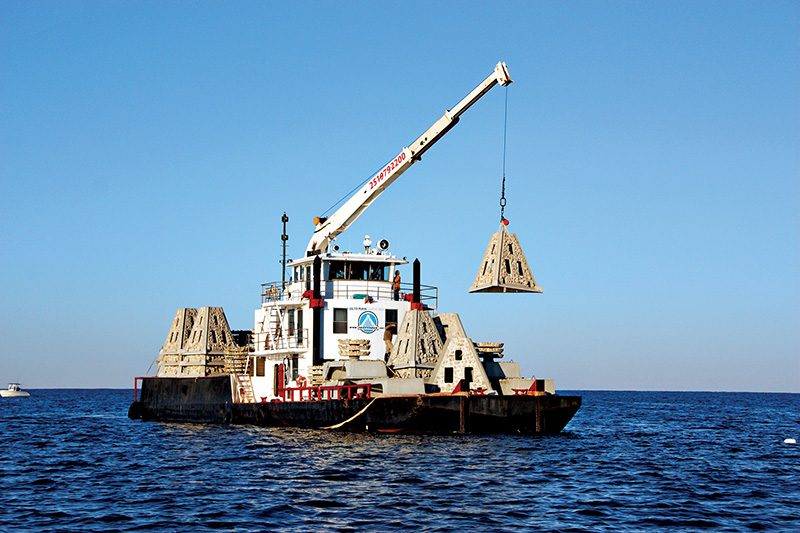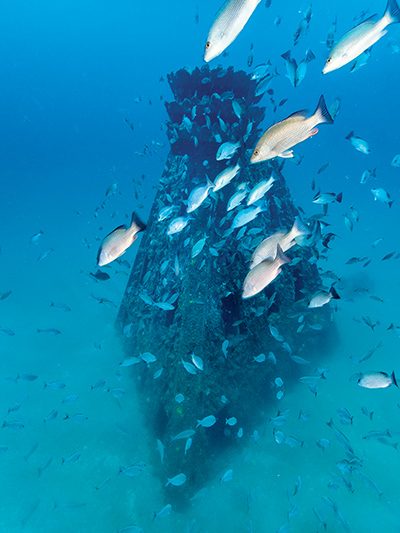
IN JUNE 2019 I MADE MY FIRST DIVE after eight months of repairing our home in Mexico Beach, Florida, from the ravages of Hurricane Michael. After finally recovering from the storm, I resumed doing underwater surveys as a volunteer diver for the Mexico Beach Artificial Reef Association (MBARA).
On a beautiful June day, my buddy and I headed into the Gulf of Mexico to check the condition of the artificial reefs and the life attracted to them. We descended the anchor line on a site with three reefs in 95 feet of water. Each pyramid-shaped structure stands 16 feet tall and weighs 18 tons.
As we neared the bottom, I’m sure my face mirrored the look of disbelief on my buddy’s. Two of the structures were tipped over. I couldn’t fathom the force needed to topple these massive reefs deep below the surface. It was important to capture this incident in photos and a survey because this information would impact artificial reef designs in the future.
Divers can assist with monitoring artificial reefs and gather information that helps improve the reefs’ durability and performance. For example, 8-foot-tall (2,4 meters) pyramid structures are popular because they are durable and stack easily on a deployment vessel, but divers observed low levels of marine diversity. By experimenting with different designs, we learned that a reef had more diversity when an artificial reef with many small layers, forming an ecosystem, was placed next to the pyramids. The ecosystem attracts smaller fish and provides foraging opportunities for the larger fish.
We observed that the ecosystems on top of larger reef structures were prone to damage from boat anchors when we found them knocked off several reefs and sitting on the seafloor. Hurricane Michael showed that the reefs with intact ecosystems were top-heavy and more likely to topple over. Now we often deploy ecosystems nested inside, dangling inside the large pyramid with ropes like a bell clapper.
Divers gather samples from deployed reefs and provide reports to the Florida Fish and Wildlife Conservation Commission (FWC). This information helps ensure reefs are placed as intended and are in good condition, not crumpled up on the bottom.
Diver surveys of artificial reef marine life contribute to science — the FWC has adopted the Reef Environmental Education Foundation (REEF) citizen science program for doing fish surveys. REEF provides training on fish identification and how to conduct surveys, and in return divers contribute to their extensive marine fish database. The information is available to the public, and scientists often use it.
If you are a diver in a coastal area, consider reaching out to your local artificial reef association. It’s a great way to bring new purpose to your dives. You may even find an organization that will cover some of your dive expenses. In Florida, contact the FWC to ask about an active artificial reef organization near you. AD

© Alert Diver — Q2 2023